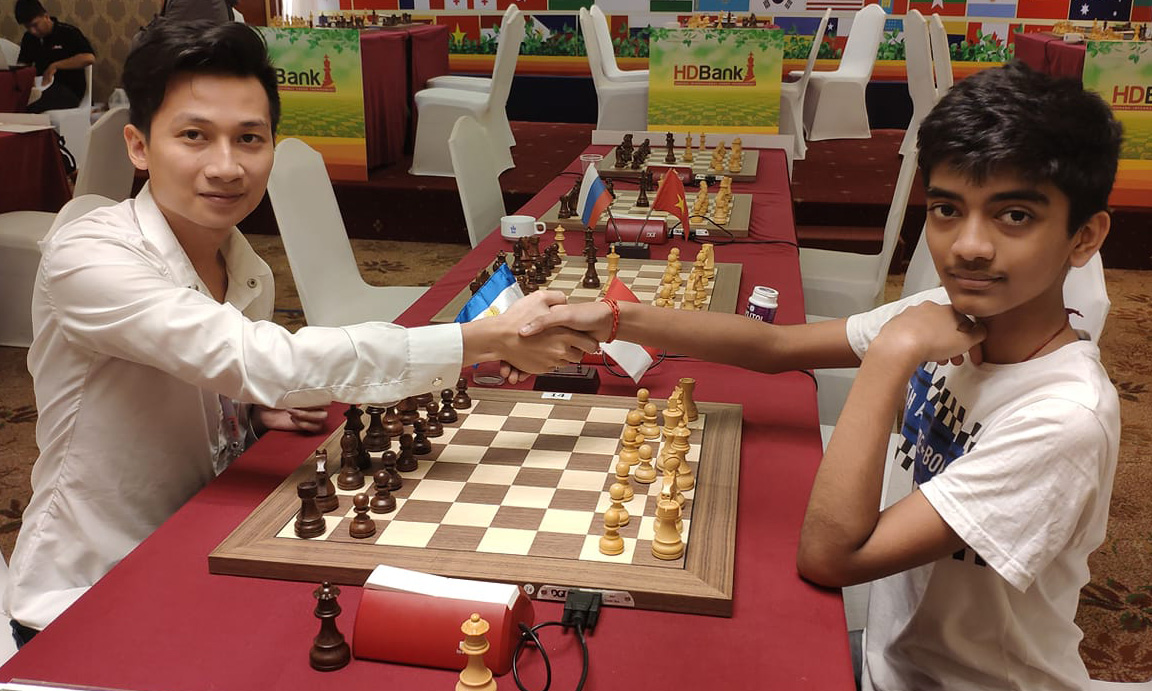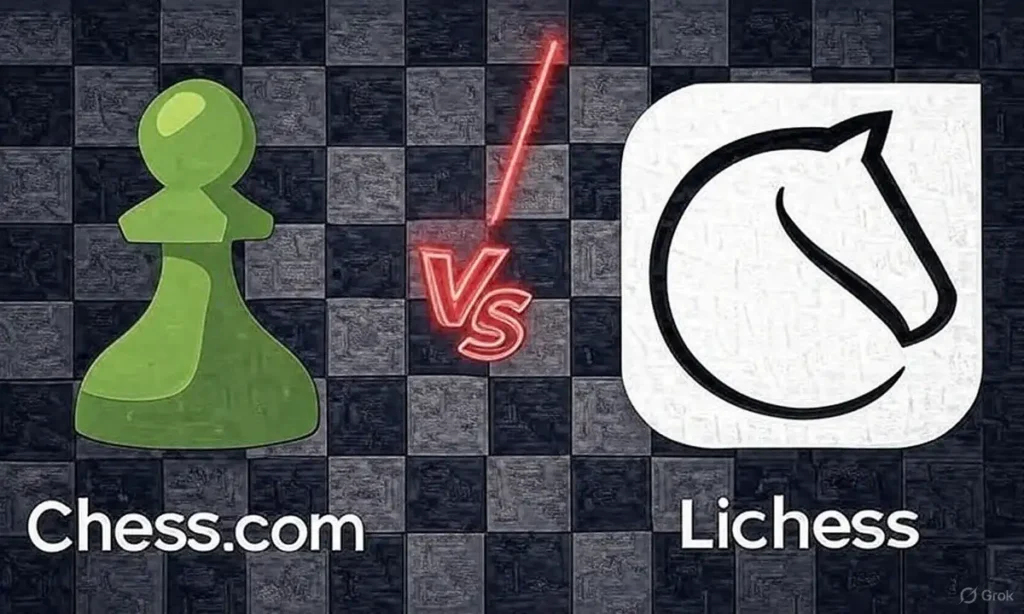Online chess ratings are more than just numbers. They represent your progress, your consistency, and your ability to perform against other players in the same community. But the two biggest platforms—Chess.com and Lichess—use slightly different systems to calculate those numbers. Let’s explore how each platform’s rating system works, what affects your score, and why your ratings may differ across sites.
What a Chess Rating Really Means
A rating is a way to estimate how strong you are compared to other players.
If you perform better than expected, your rating goes up. If you perform worse, it goes down.
Every platform has its own “rating pool.” That means a 1500 rating on Chess.com doesn’t necessarily equal 1500 on Lichess—or in over-the-board tournaments. Each system is self-contained and reflects only the players and algorithms within that community.
How Chess.com Ratings Work
1. The system
Chess.com uses a version of the Glicko-1 rating system. Each player has separate ratings for different time controls—like blitz, bullet, rapid, or daily—and for other activities such as puzzles or variants.
2. The basics
When you win, your rating increases. When you lose, it decreases.
The amount of change depends on three key factors:
- Opponent’s rating: Beating a higher-rated player earns you more points; losing to a lower-rated player costs more.
- Rating difference: The larger the gap between you and your opponent, the more or less the system adjusts your rating.
- Rating confidence: The system tracks how certain it is about your true skill. This confidence is called rating deviation (RD).
3. New players vs. experienced players
When you first join Chess.com, your RD is high because the system doesn’t yet know your skill level. That’s why your rating jumps up or down dramatically after each game. As you play more, the system becomes more confident, and your rating changes more slowly.
For example:
- A new player might gain or lose 60 points per game.
- An experienced player might move only 5 to 15 points per game.
4. What this means for you
Your early games are volatile—don’t panic. Big swings are normal. Once your rating stabilizes, it will more accurately reflect your level. From that point, steady improvement will show up gradually in your score.
How Lichess Ratings Work
1. The system
Lichess uses the Glicko-2 system, an updated version of the Glicko-1 model. Like Chess.com, it gives separate ratings for bullet, blitz, rapid, classical, puzzles, and correspondence games.
2. The starting point
Every new Lichess player begins around 1500. But that’s just a temporary estimate. The platform needs a few dozen games to figure out your true level.
3. The three components of Glicko-2
Each player has:
- Rating: Your visible number.
- Rating Deviation (RD): How sure the system is about that number.
- Volatility: How much your performance tends to vary.
When your RD is high (because you’re new or haven’t played for a while), the rating swings are bigger. As you play more games and the system learns your style, RD decreases, and your rating stabilizes.
4. What this means for you
In your first few games, don’t be surprised if your rating jumps by 100 or more after a single win or loss. That’s normal. Once you’ve played enough, your number becomes much steadier and begins to represent your actual skill level on Lichess.
Chess.com vs. Lichess: Key Differences
| Feature | Chess.com | Lichess |
|---|---|---|
| Rating System | Glicko-1 | Glicko-2 |
| Starting Rating | Around 1200 (varies by mode) | Around 1500 |
| Separate Ratings | Yes (Blitz, Bullet, Rapid, etc.) | Yes (same categories) |
| Rating Volatility | Moderate | Slightly higher for new accounts |
| Rating Pools | Larger and more casual | Smaller but often stronger at higher levels |
Because both systems use their own rating pools, your 1500 on Lichess might correspond to roughly 1300–1400 on Chess.com. There’s no universal conversion formula, but most players notice that Lichess ratings tend to run higher than Chess.com ratings at the same skill level.
How to Interpret Your Online Rating
- Don’t obsess over the number. Your rating is just a snapshot of recent performance—not your full potential.
- Focus on one time control. If you switch constantly between blitz, bullet, and rapid, it’s hard to track true improvement.
- Expect swings early. The system “learns” about you through results. Big rating jumps are normal at first.
- Beat stronger players consistently. That’s the fastest path to climbing the ladder.
- Review your games. Ratings follow improvement, not the other way around. Study your wins and losses to find patterns.
Approximate Rating Correlation Between Chess.com and Lichess
| Chess.com Rating (Blitz) | Lichess Blitz Rating (Estimated Equivalent) | Level / Typical Strength |
|---|---|---|
| <800 | <1,100 | Beginner – learning rules |
| 900 | 1,200 | Beginner – starting to see tactics |
| 1,000 | 1,420 | Lower intermediate |
| 1,100 | 1,475–1,520 | Intermediate – starting to plan |
| 1,200 | 1,565 | Intermediate – stable play |
| 1,300 | 1,635 | Solid club beginner |
| 1,400 | 1,705 | Consistent tactical awareness |
| 1,500 | 1,780 | Club player level |
| 1,600 | 1,850 | Upper club player |
| 1,700 | 1,910 | Strong club player |
| 1,800 | 1,970 | Candidate class player |
| 1,900 | 2,050 | Advanced player |
| 2,000 | 2,120 | Candidate Master (CM) range |
| 2,100 | 2,200 | FIDE ~1800–1900 strength |
| 2,200 | 2,275 | FIDE ~2000 level |
| 2,300 | 2,340 | National Master strength |
| 2,400 | 2,490 | FIDE Master (FM) range |
| 2,500 | 2,580 | International Master (IM) strength |
| 2,600 | 2,680 | Low Grandmaster level |
| 2,700 | 2,760 | Decent GM |
| 2,800 | 2,850 | Super GM level |
| 2,900+ | 2,900+ | Elite / World Top 100 |
Summary
- Below 2000: Lichess ratings are usually 200–300 points higher than Chess.com.
- Between 2000–2300: The gap shrinks to around 100–150 points.
- Above 2400: Both systems begin to align closely, as top players perform consistently and both rating pools converge in skill level.
- At elite level (2600+): The difference is minimal. These players are well-calibrated and often active on both platforms.
Why You Shouldn’t Compare Ratings Across Sites
Even though both Chess.com and Lichess use similar mathematical foundations, the rating pools are completely different.
The typical Lichess blitz player is not necessarily the same strength as a Chess.com blitz player with the same number.
It’s better to think of each platform as its own universe. Compete, improve, and measure progress within that system, rather than trying to match numbers between them.
Frequently Asked Questions About Chess.com and Lichess Ratings
1. Why is my rating on Lichess higher than on Chess.com?
Because the two platforms use different systems and player pools.
Lichess uses the Glicko-2 system, which tends to give higher ratings in the early stages, while Chess.com’s Glicko-1 system adjusts more conservatively.
Also, Lichess players are often slightly stronger in average skill per rating band, so numbers naturally run higher.
In general, a 1500 on Chess.com ≈ 1750–1850 on Lichess.
2. What’s the lowest possible rating on each site?
- Chess.com: has a rating floor of around 300 Elo. You can’t go lower than that.
- Lichess: has no floor at all. Players can drop below 300, sometimes even near 200, if they lose repeatedly.
Lichess ratings start at 1500 for everyone, then adjust sharply during your first few games.
3. Do I have separate ratings for Blitz, Bullet, and Rapid?
Yes.
Both platforms treat each time control as a separate “universe.”
That’s why you can be 1800 in Blitz, 1500 in Rapid, and 2100 in Bullet—the rating reflects performance in that specific format only.
4. Are online ratings comparable to FIDE or USCF ratings?
Not directly.
Online pools are more casual and often inflated.
As a rough idea:
- Lichess 2000 ≈ FIDE 1700–1800
- Chess.com 2000 ≈ FIDE 1800–1900
But this varies widely by player. Use these conversions only as approximate guides, not official equivalents.
5. Why does my rating jump so much after the first few games?
Because your rating deviation (RD) is still high.
The system doesn’t yet “trust” its estimate of your level, so it makes big adjustments after every result.
Once you’ve played 20–30 games, RD drops, and your rating stabilizes.
6. Why does my rating go down even when I win sometimes?
On Lichess, if you beat someone much lower-rated, your expected score is almost 100%.
That means the system already assumed you’d win, so the gain might be near zero—or even slightly negative if the uncertainty (RD) changes.
In short: not all wins are equal.
7. Do ratings decay if I stop playing?
- Chess.com: No decay for normal accounts, but inactivity can increase RD internally (making your rating less “certain”).
- Lichess: No rating decay, but your RD will rise the longer you stay inactive. When you return, your first few games will cause bigger rating swings.
8. What’s the highest rating ever achieved?
- On Chess.com: Top GMs like Hikaru Nakamura, Magnus Carlsen, and Daniel Naroditsky have reached around 3300–3400 in Blitz.
- On Lichess: Some elite accounts exceed 3200–3300 in Blitz.
These are online figures only and don’t correspond to FIDE over-the-board ratings.
9. Can my child or a beginner have a rating below 1000?
Yes, absolutely.
On Chess.com, beginners often start around 400–800 depending on early results.
On Lichess, since everyone starts at 1500, new players might fall to 700–1000 after their first few dozen games. That’s perfectly normal—ratings adjust quickly at low levels.
10. So which system is “better”?
Neither.
Both are mathematically solid and serve their own purpose:
- Chess.com favors a smoother experience and slower changes.
- Lichess provides faster adaptation and full transparency (you can see your RD and volatility).
Choose the one that fits your style: steady growth or instant feedback.

I’m Xuan Binh, the founder of Attacking Chess, and the Deputy Head of Communications at the Vietnam Chess Federation (VCF). My chess.com and lichess rating is above 2300. Send me a challenge or message via Lichess. Follow me on Twitter (X) or Facebook.






